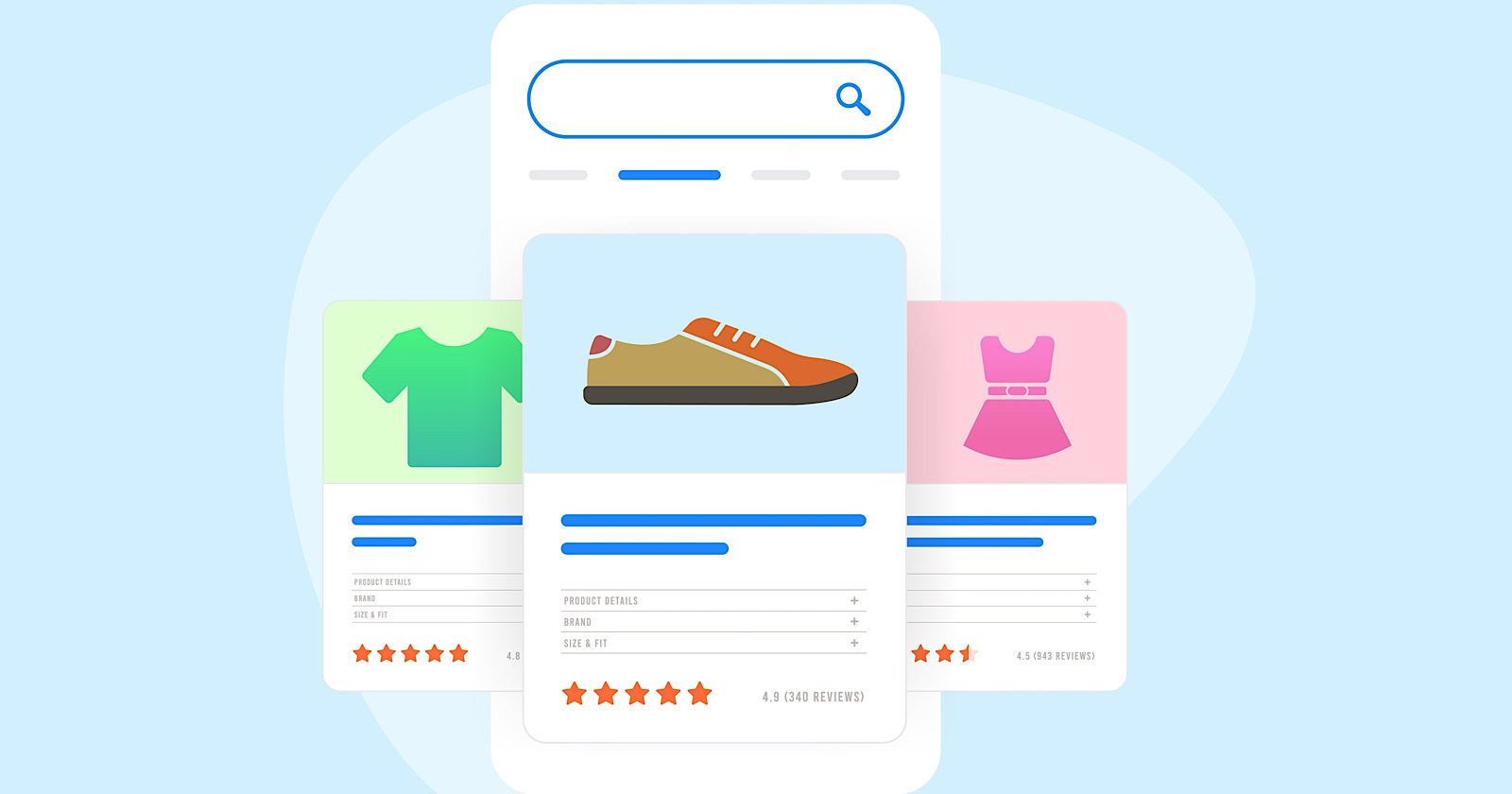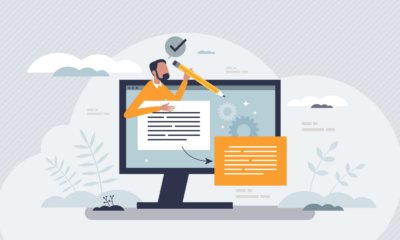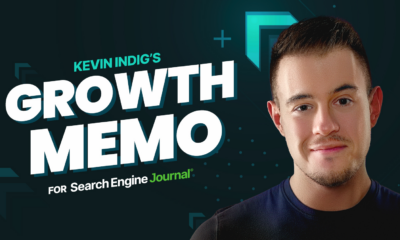SEO
Inflation’s Impact On Ad Spend Detailed In Merkle Report

The leading technology and data-driven customer experience company, Merkle, released its quarterly Performance Media Report last week.
Research from the past quarter shows valuable insights into marketers’ priorities, challenges, and performance.
With over 57% of respondents indicating an increase in paid search spend YoY, these findings are especially crucial as we face economic challenges and uncertainty.
I sat down with Matt Mierzejewski, SVP of Search at Merkle, where he provided his take on some of the most glaring stats from the Performance Report.
Prioritizing Privacy And Measurement
From the Merkle report, 45% of respondents stated that getting accurate reporting in the face of privacy regulations is a top priority in measurement.
Many companies are likely in the same boat but may not know where to start.
Mierzejewski states: “Brands are big on cross-device measurement. Apple disrupted the measurement game. Many companies are looking to build their data warehouses for multiple reasons:”
- Too much reliance on individual platforms. The more conversions are modeled in a platform, the less perfect a company’s individual measurement is.
- They’re tired of black box solutions. Brands want to be able to own or change the way they model conversions.
Mierzejewski also noted that with more brands looking to build their own reporting solutions, it changes the dependency from the platform conversion truth to their own conversion truth.
Prioritizing Audiences & First-Party Data
Looming privacy regulations have kickstarted the need for brands to create and manage their first-party data.
However, only 35% of respondents prioritize managing audiences and first-party data.
I asked Mierzejewski: “what do you see as the macro implications of so many companies waiting on this?”
He responded with a few points:
“From a digital perspective, they’re shifting towards getting their creative and messaging right.” If you’ve interacted with a brand, you’ll notice how consumer expectations have shifted.
“An implication of deprioritizing audiences and first-party data is poor customer experience.” Not prioritizing these crucial aspects of marketing will accelerate the deceleration, or further remove, the customer feeling connected to that brand.
“You have to use those unknown audience signals to your advantage to meet the expectations of consumers and beat out the competition.” For example, In-Market audiences from Google releases more signal and intent of propensity to buy. They’re allowing those signals to be in the open market.
Mierzejewski summarized: “It misses out on the opportunity for the best customers. You’ll be left competing for the worst customers!”
Paid Social Growth In 2023
An overwhelming 67% of respondents prioritized paid social more this year than 2021.
The growing number of social platforms with ad opportunities is a partial factor in increased prioritization.
When asked about what social platform would see the most growth in 2023?
“If we’re talking raw dollars, Facebook and Instagram will still win,” Mierzejewski stated.
Further, he notes: “If we’re looking at percentage growth and who to watch for, it’s TikTok.” Matt shed some light on user projections, with TikTok’s growth projected to surpass Snapchat next year.
Inflation Is Driving Faster Adoption Of Machine Learning
With inflation costs, adopting automation and machine learning may be put on the backburner.
Not according to the Merkle Performance Report.
- 41% of respondents are beginning to take action on automation and machine learning strategies
- 38% of respondents have made significant progress in their ML strategies
So, why is inflation driving faster automation adoption?
“Inflation is just one element. It goes hand-in-hand with the last few years. COVID accelerated Ecommerce and the digital world for many companies,” Mierzejewski noted. He went on to say:
“There’s greater scrutiny on the investments in companies. They are trying to beat the market and the competition. There’s pressure for leaders to be tied into the data and marketing measurement.”
Let’s not forget one of the most critical aspects: resources.
Mierzejewski finished by noting that if companies are having trouble hiring individuals, they’re trying to do more with less. They have to rely on automation to supplement the workload.
Inflation’s Impact On Advertiser Strategies
We’ve seen the stats on increased advertiser costs YoY.
We have a better understanding of what marketers are prioritizing in the future.
Amid economic factors that companies can’t control, advertisers might not know how or where to pivot their strategy. When posed with this question, Mierzejewski provided his expert opinions.
“Expect double-digit changes to ad spend.”
Whether the above statement refers to an increase or decrease in ad spend, this change is based on a mixed bag of strategy, cash flow, inventory positions, and the vertical.
“The economic pressure reminds me of 2008 – the downturn of the digital sphere. Some clients will pull back on ad spend. Others may take the opportunity on the downturn and have double-digit growth,” Matt commented.
CPCs will likely decline.
In these types of environments, CPCs are likely to go down. This could allow advertisers to shuffle dollars based on what will work hardest for them.
Matt notes, “If you can be bold, it’s the time to do it.” The decreased CPCs become a buying opportunity for advertisers with the financial capacity to spend more.
“Don’t over-pat yourself on the back.”
Mierzejewski emphasized, “Be careful on the data.” He explained that with inflation and rising costs, you may also see a natural rise in revenue.
For example, if you’re seeing a 10% lift in sales but spent 15% more in advertising or COGS, that can provide a false narrative in growth. The 10% increase in revenue may be attributed to inflation costs and, in this case, shows a decline in profitability.
Summary
The Q3 Performance Marketing Report provides invaluable data to unpack.
If you haven’t yet taken action on privacy regulations, you’re not the only one.
And while inflation, privacy, and other economic impacts can cause shifts in performance trends, they’re not the only factors.
The paid media landscape changes every day. Use this to understand how others in the space are shifting priorities and strategies and what this means for you.
You can download your copy of the Performance Marketing Report here.
A special thank you to Matt Mierzejewski, SVP of Search at Merkle, for taking the time to address these statistics and providing additional insights.
Featured Image: PopTika/Shutterstock
SEO
Google Cautions On Blocking GoogleOther Bot

Google’s Gary Illyes answered a question about the non-search features that the GoogleOther crawler supports, then added a caution about the consequences of blocking GoogleOther.
What Is GoogleOther?
GoogleOther is a generic crawler created by Google for the various purposes that fall outside of those of bots that specialize for Search, Ads, Video, Images, News, Desktop and Mobile. It can be used by internal teams at Google for research and development in relation to various products.
The official description of GoogleOther is:
“GoogleOther is the generic crawler that may be used by various product teams for fetching publicly accessible content from sites. For example, it may be used for one-off crawls for internal research and development.”
Something that may be surprising is that there are actually three kinds of GoogleOther crawlers.
Three Kinds Of GoogleOther Crawlers
- GoogleOther
Generic crawler for public URLs - GoogleOther-Image
Optimized to crawl public image URLs - GoogleOther-Video
Optimized to crawl public video URLs
All three GoogleOther crawlers can be used for research and development purposes. That’s just one purpose that Google publicly acknowledges that all three versions of GoogleOther could be used for.
What Non-Search Features Does GoogleOther Support?
Google doesn’t say what specific non-search features GoogleOther supports, probably because it doesn’t really “support” a specific feature. It exists for research and development crawling which could be in support of a new product or an improvement in a current product, it’s a highly open and generic purpose.
This is the question asked that Gary narrated:
“What non-search features does GoogleOther crawling support?”
Gary Illyes answered:
“This is a very topical question, and I think it is a very good question. Besides what’s in the public I don’t have more to share.
GoogleOther is the generic crawler that may be used by various product teams for fetching publicly accessible content from sites. For example, it may be used for one-off crawls for internal research and development.
Historically Googlebot was used for this, but that kind of makes things murky and less transparent, so we launched GoogleOther so you have better controls over what your site is crawled for.
That said GoogleOther is not tied to a single product, so opting out of GoogleOther crawling might affect a wide range of things across the Google universe; alas, not Search, search is only Googlebot.”
It Might Affect A Wide Range Of Things
Gary is clear that blocking GoogleOther wouldn’t have an affect on Google Search because Googlebot is the crawler used for indexing content. So if blocking any of the three versions of GoogleOther is something a site owner wants to do, then it should be okay to do that without a negative effect on search rankings.
But Gary also cautioned about the outcome that blocking GoogleOther, saying that it would have an effect on other products and services across Google. He didn’t state which other products it could affect nor did he elaborate on the pros or cons of blocking GoogleOther.
Pros And Cons Of Blocking GoogleOther
Whether or not to block GoogleOther doesn’t necessarily have a straightforward answer. There are several considerations to whether doing that makes sense.
Pros
Inclusion in research for a future Google product that’s related to search (maps, shopping, images, a new feature in search) could be useful. It might be helpful to have a site included in that kind of research because it might be used for testing something good for a site and be one of the few sites chosen to test a feature that could increase earnings for a site.
Another consideration is that blocking GoogleOther to save on server resources is not necessarily a valid reason because GoogleOther doesn’t seem to crawl so often that it makes a noticeable impact.
If blocking Google from using site content for AI is a concern then blocking GoogleOther will have no impact on that at all. GoogleOther has nothing to do with crawling for Google Gemini apps or Vertex AI, including any future products that will be used for training associated language models. The bot for that specific use case is Google-Extended.
Cons
On the other hand it might not be helpful to allow GoogleOther if it’s being used to test something related to fighting spam and there’s something the site has to hide.
It’s possible that a site owner might not want to participate if GoogleOther comes crawling for market research or for training machine learning models (for internal purposes) that are unrelated to public-facing products like Gemini and Vertex.
Allowing GoogleOther to crawl a site for unknown purposes is like giving Google a blank check to use your site data in any way they see fit outside of training public-facing LLMs or purposes related to named bots like GoogleBot.
Takeaway
Should you block GoogleOther? It’s a coin toss. There are possible potential benefits but in general there isn’t enough information to make an informed decision.
Listen to the Google SEO Office Hours podcast at the 1:30 minute mark:
Featured Image by Shutterstock/Cast Of Thousands
SEO
AI Search Boosts User Satisfaction

A new study finds that despite concerns about AI in online services, users are more satisfied with search engines and social media platforms than before.
The American Customer Satisfaction Index (ACSI) conducted its annual survey of search and social media users, finding that satisfaction has either held steady or improved.
This comes at a time when major tech companies are heavily investing in AI to enhance their services.
Search Engine Satisfaction Holds Strong
Google, Bing, and other search engines have rapidly integrated AI features into their platforms over the past year. While critics have raised concerns about potential negative impacts, the ACSI study suggests users are responding positively.
Google maintains its position as the most satisfying search engine with an ACSI score of 81, up 1% from last year. Users particularly appreciate its AI-powered features.
Interestingly, Bing and Yahoo! have seen notable improvements in user satisfaction, notching 3% gains to reach scores of 77 and 76, respectively. These are their highest ACSI scores in over a decade, likely due to their AI enhancements launched in 2023.
The study hints at the potential of new AI-enabled search functionality to drive further improvements in the customer experience. Bing has seen its market share improve by small but notable margins, rising from 6.35% in the first quarter of 2023 to 7.87% in Q1 2024.
Customer Experience Improvements
The ACSI study shows improvements across nearly all benchmarks of the customer experience for search engines. Notable areas of improvement include:
- Ease of navigation
- Ease of using the site on different devices
- Loading speed performance and reliability
- Variety of services and information
- Freshness of content
These improvements suggest that AI enhancements positively impact various aspects of the search experience.
Social Media Sees Modest Gains
For the third year in a row, user satisfaction with social media platforms is on the rise, increasing 1% to an ACSI score of 74.
TikTok has emerged as the new industry leader among major sites, edging past YouTube with a score of 78. This underscores the platform’s effective use of AI-driven content recommendations.
Meta’s Facebook and Instagram have also seen significant improvements in user satisfaction, showing 3-point gains. While Facebook remains near the bottom of the industry at 69, Instagram’s score of 76 puts it within striking distance of the leaders.
Challenges Remain
Despite improvements, the study highlights ongoing privacy and advertising challenges for search engines and social media platforms. Privacy ratings for search engines remain relatively low but steady at 79, while social media platforms score even lower at 73.
Advertising experiences emerge as a key differentiator between higher- and lower-satisfaction brands, particularly in social media. New ACSI benchmarks reveal user concerns about advertising content’s trustworthiness and personal relevance.
Why This Matters For SEO Professionals
This study provides an independent perspective on how users are responding to the AI push in online services. For SEO professionals, these findings suggest that:
- AI-enhanced search features resonate with users, potentially changing search behavior and expectations.
- The improving satisfaction with alternative search engines like Bing may lead to a more diverse search landscape.
- The continued importance of factors like content freshness and site performance in user satisfaction aligns with long-standing SEO best practices.
As AI becomes more integrated into our online experiences, SEO strategies may need to adapt to changing user preferences.
Featured Image: kate3155/Shutterstock
SEO
Google To Upgrade All Retailers To New Merchant Center By September

Google has announced plans to transition all retailers to its updated Merchant Center platform by September.
This move will affect e-commerce businesses globally and comes ahead of the holiday shopping season.
The Merchant Center is a tool for online retailers to manage how their products appear across Google’s shopping services.
Key Changes & Features
The new Merchant Center includes several significant updates.
Product Studio
An AI-powered tool for content creation. Google reports that 80% of current users view it as improving efficiency.
This feature allows retailers to generate tailored product assets, animate still images, and modify existing product images to match brand aesthetics.
It also simplifies tasks like background removal and image resolution enhancement.
Centralized Analytics
A new tab consolidating various business insights, including pricing data and competitive analysis tools.
Retailers can access pricing recommendations, competitive visibility reports, and retail-specific search trends, enabling them to make data-driven decisions and capitalize on popular product categories.
Redesigned Navigation
Google claims the new interface is more intuitive and cites increased setup success rates for new merchants.
The platform now offers simplified website verification processes and can pre-populate product information during setup.
Initial User Response
According to Google, early adopters have shown increased engagement with the platform.
The company reports a 25% increase in omnichannel merchants adding product offers in the new system. However, these figures have yet to be independently verified.
Jeff Harrell, Google’s Senior Director of Merchant Shopping, states in an announcement:
“We’ve seen a significant increase in retention and engagement among existing online merchants who have moved to the new Merchant Center.”
Potential Challenges and Support
While Google emphasizes the upgrade’s benefits, some retailers, particularly those comfortable with the current version, may face challenges adapting to the new system.
The upgrade’s mandatory nature could raise concerns among users who prefer the existing interface or have integrated workflows based on the current system.
To address these concerns, Google has stated that it will provide resources and support to help with the transition. This includes tutorial videos, detailed documentation, and access to customer support teams for troubleshooting.
Industry Context
This update comes as e-commerce platforms evolve, with major players like Amazon and Shopify enhancing their seller tools. Google’s move is part of broader efforts to maintain competitiveness in the e-commerce services sector.
The upgrade could impact consumers by improving product listings and providing more accurate information across Google’s shopping services.
For the e-commerce industry as a whole, it signals a continued push towards AI-driven tools and data-centric decision-making.
Transition Timeline
Google states that retailers will be automatically upgraded by September if they still need to transition.
The company advises users to familiarize themselves with the new features before the busy holiday shopping period.
Featured Image: BestForBest/Shutterstock
-

 SEARCHENGINES6 days ago
SEARCHENGINES6 days agoBillions Of Google goo.gl URLs To 404 In The Future
-
SEARCHENGINES5 days ago
Daily Search Forum Recap: July 22, 2024
-

 SEO6 days ago
SEO6 days ago11 Copyscape Alternatives To Check Plagiarism
-

 SEARCHENGINES7 days ago
SEARCHENGINES7 days agoGoogle Core Update Coming, Ranking Volatility, Bye Search Notes, AI Overviews, Ads & More
-

 SEO6 days ago
SEO6 days agoGoogle Warns Of Last Chance To Export Notes Search Data
-
SEARCHENGINES4 days ago
Daily Search Forum Recap: July 23, 2024
-

 AFFILIATE MARKETING6 days ago
AFFILIATE MARKETING6 days agoThe Top 5 AI Tools That Can Revolutionize Your Workflow and Boost Productivity
-

 SEO4 days ago
SEO4 days agoSystem Builders – How AI Changes The Work Of SEO
















You must be logged in to post a comment Login